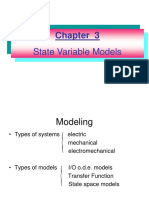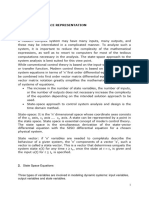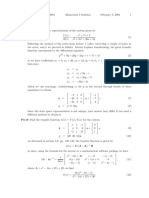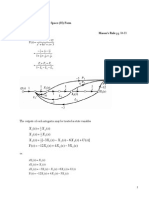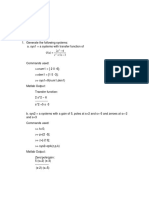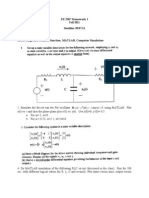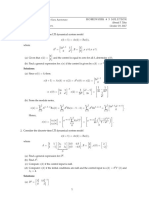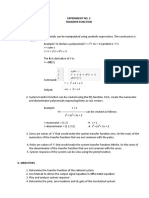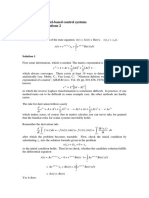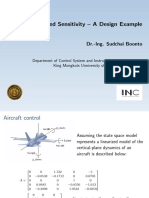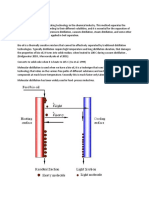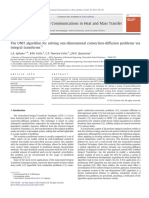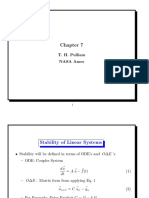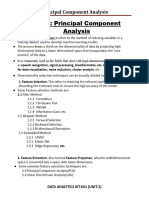0% found this document useful (0 votes)
115 views7 pagesModel-Based Control Systems Guide
This document discusses model-based control systems and contains 4 problems with solutions. Problem 1 involves forming a differential model and state-space representation of a mass-spring-damper system, and using MATLAB to plot singular values and calculate the H-infinity norm. Problem 2 involves determining a realization and plotting singular values for a given transfer function matrix. Problem 3 calculates poles and zeros for two given transfer function matrices. Problem 4 demonstrates that eigenvalues do not reliably indicate a multivariable system's gain, and that singular values provide a better alternative.
Uploaded by
James KabugoCopyright
© © All Rights Reserved
We take content rights seriously. If you suspect this is your content, claim it here.
Available Formats
Download as PDF, TXT or read online on Scribd
0% found this document useful (0 votes)
115 views7 pagesModel-Based Control Systems Guide
This document discusses model-based control systems and contains 4 problems with solutions. Problem 1 involves forming a differential model and state-space representation of a mass-spring-damper system, and using MATLAB to plot singular values and calculate the H-infinity norm. Problem 2 involves determining a realization and plotting singular values for a given transfer function matrix. Problem 3 calculates poles and zeros for two given transfer function matrices. Problem 4 demonstrates that eigenvalues do not reliably indicate a multivariable system's gain, and that singular values provide a better alternative.
Uploaded by
James KabugoCopyright
© © All Rights Reserved
We take content rights seriously. If you suspect this is your content, claim it here.
Available Formats
Download as PDF, TXT or read online on Scribd
/ 7












